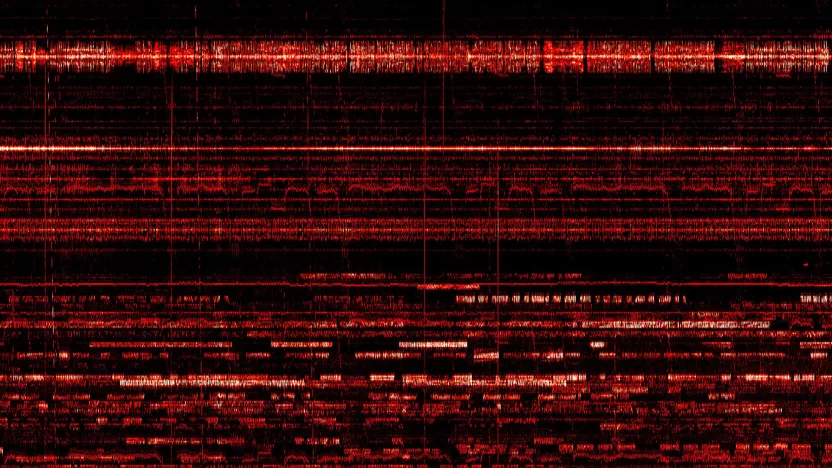This must be the place
The buildings of the future will be quite similar to those we know now, yet very different. All with the help of Big Data.
by Elena Malakhatka

“How will our homes look and how will new technologies impact them?”, is a question that is often asked about the future. It’s a question which highlights how improperly we use the term “technology” rather than term “tool”. By talking about technology, one may be referring to both a main area of research or to a device. AI or R+ (VR/AR/MR) can be both domains and tools for example.
Drawing a boundary between these two terms is important, as it is important to define boundaries between different areas of research. Scientists are explorers, they must go beyond but also keep a clear idea of where they are approaching a topic from. In my field of research this is no different, and today I’m exploring and manufacturing the buildings of the future.
My research is primarily in the area of Big Data, with a primary focus on energy efficiency. The main idea behind the research is to find how we can apply Data Science (DS) in building environments or finding ways to completely redesign or rethink them.
This includes resource efficiency, not only in terms of energy, water or waste; but also in human behavior, mobility, transport, city events and weather. To do this, digital layers of the buildings are taken into account. Thanks to the use of data, we can better understand what the building’s environment is like for the end users. In brief, my research is a combination of DS, sustainable building construction technologies, and business modeling, which together are used to understand how this research can be adapted to the market and if it comprises market-ready technologies – all in accordance with the NASA-designed approach, Technology Readiness Level.
The buildings of the future will be quite similar to those we know now, yet very different. To provide an example that clarifies this oxymoronic image, we need to look to the automotive industry. Today’s cars look similar to those of 50 years ago, but functionality-wise they are completely different. Today’s cars are driverless, sensor-based, have climate control and are provided intertwined with many different digital services. Increasingly, they are becoming more software than hardware. By the same token, buildings can look the same but function in a multitude of different and new ways.
The first layer of innovation won’t happen in form. In fact, a building’s form won’t necessarily be innovative at all (at first anyway), but their functionality will. With functionality, our research focuses on two main points: comfort for those inhabiting the space, and resource efficiency – the amount of resources they use. Then we try to build models which find a balance between these two factors. Then we can move to the next layer and ask ourselves other questions: Where is the self-expression? Does this building reflect the occupants’ personality? Does it help them to be more productive? Our goal is that of creating buildings which help users perform better in different ways. With this idea in mind, we also design services and make research experiments – soon we will be testing to the functionality of movable walls for example.
By the year 2045, there will be a deep connection between humans and buildings. In the present day, we are still very much disconnected from our buildings. When we choose clothes, we choose something we feel good in. But in a building, normally we simply deal with what we have, and this inability to tailor our environment creates a disconnect. Future buildings will be more responsive. Another project which I am working on is centered on digital and aims to create rooms that change according to a person’s favorite colors, shape, types of art or music of the person living there.
This customization is bent on adapting environments according to its inhabitants and purpose. If it’s a place for collective meetings and experiences, it should be responsive to those needs. These are the two parameters that count: who is there and why. Buildings in the future will have to address these parameters better.
As I mentioned, the buildings of the future will initially differ from a functional point of view but there is the potential for room to adapt their form too, even so far as shifting into fractal geometry. If we compare the tree and the complexity of its geometry to a building, we see the latter has a very simple geometry. For our brain, it means less work to do, fewer things to notice, less of a canvas to conquer. This is one of the reasons we love spending time in parks because nature is complex and inspires our brains to be creative. In a building, our brain’s activity is stimulated in a very limited way due to most buildings having very limited forms.
Over time, there will be a transition from a functionality based approach to a mission-based one – which is how spaceships are built. In space, there is always a mission to accomplish, one of the more important being the goal of bringing back the crew safe and sound. But when it comes to building a building, the mission is capacity, not necessarily health and happiness. This must and will change.
In the near future, the buildings we live in will know us, and us them. At the IBM Research Center in Dublin, scientists are making experiments on what they call cognitive buildings, which essentially means focusing on the building’s ecosystem in order to listen to what it can tell us. We can then better identify and measure a building’s performance in order to understand how it actually functions and how humans can better interact with it.
This is once again where the cruciality of data becomes apparent. Just as how our condition can be monitored thanks to data on our body’s temperature or blood pressure (to give some examples), the same can be done with buildings. Of course, there are different parameters, and analysing digital layers will play a very important role. As the use of digital services continues to grow we will need something to organize the data flow – this can’t be done without the help of digital layers.
One such could be a physical wall with a digital augmented layer which reflects information about the productivity in the building, not in a numerical way, but in an abstract way, color-wise or through fading/blossoming flowers. At the MIT, this is called a cross-reality window. To interact with this tool, however, we will need another. This is where voice-based services step in, with such a tool, we can talk directly to buildings – rendering, in many ways, the term inanimate obsolete.
If this is too abstract, then picture this scene: A person is sitting in a room when suddenly they start feeling hot, resulting in their asking the building the question: “Can you decrease the temperature?”. The system does not just decrease the temperature but also answers back: “Yes, I agree that it is warm but if I decrease the temperature by 3 degrees, it will cost you 30 percent more energy than if I decrease the temperature by 2; I suggest the second option”. We are talking about intelligent systems which are not simply executors of demands but are able to come up with suggestions.
Beside digital layers and voice-based services, a third tool which is particularly useful in building future scenarios is Virtual Reality. This is a precious tool that can give us an extensive overview of an environment even before it is manufactured in the real world. Inevitably, problems will arise when trying to explain how a place can be built according to fractal geometry. But by building a virtual version of a space, we can invite people to better understand how the space will look and feel. At the same time, we can also collect data related to these interactions, and record reactions, preferences, perplexities etc. This would help us to make decisions and enhance the design process. But this is not the only boon of VR, and the tool is also fundamental to the overcoming of physical and time constraints.
Through VR, a researcher can expand the testbed, go beyond the limits of physical infrastructure and create simulations. Conducting experiments on concepts such as flexible design are made possible without spending vast amounts of time and resources doing so. When it comes to the buildings of the future then, four tools are paramount: Data Science, to develop indicators which provide a better understanding of the environment being worked on; Machine Learning (ML), the technology at the core of the voice-based services that can convert voice to text thanks to Natural Language Processing (NLP), which help us to interact with our surroundings; and R+ (VR/AR/MR) through which we can virtually pre-test, pre-visualize and pre-experience the features we want to have in the future.
Is there any danger in what we are doing? I think that there is always a danger of losing control over the tools and the technologies we explore. We lose control when there’s a lack of explanations, lack of understanding. What is difficult to be understood, is also difficult to be controlled. Think of VR, as an example. The more we experiment with VR, the further we go into this new dimension, the thinner the line between our two worlds becomes, and a Pandora’s box of unintentional developments could potentially arise.
However, I’m not a big fan of fearful scenarios and sinister singularities. I try to be realistic and a bit optimistic. We build things which serve us and I believe that we are better equipped to control them when we know what we want or feel. We need to find the time to develop a better and deeper knowledge of the tools we are working with and a better comprehension of not only what we are doing, but also why we are doing it. That is how we will build the best homes of the future.


